Reunification Palace 1

Beez Neez now Chy Whella
Big Bear and Pepe Millard
Sat 30 Dec 2017 23:47
|
The Reunification Palace, Ho Chi
Minh City, Viet Nam – Part One
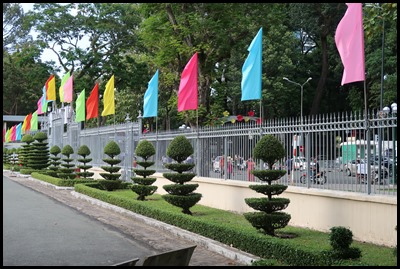 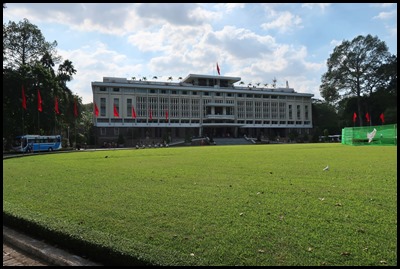 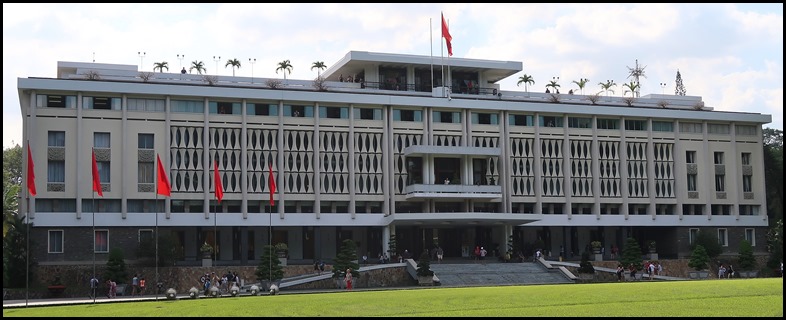 Our final
tourist stop today was the Reunification Palace.
Construction started on the 1st of July 1962 of the building (that has been
known as Independence Palace, Presidential Palace, Norodom Palace or the Palace
of the Governor-General) it was completed on the 31st of October 1966. It covers
120,000 square feet and is arranged over four storeys.
  We began at the State Banqueting
Hall and found an information board and a picture of the Hall in use. This was a banquet held by Nguyen Cao Ky,
President of the Central Executive Committee, on the occasion of the Army Day on the 19th of June
1967.
State banquets with as many as 100
guests were held in this room. One of the most notable such events was the
inauguration dinner of President Nguyen Van Thieu and his Vice President Nguyen
Cao Ky on the 31 October 1967. The last State Dinner was held here by President
Thieu on 1 March 1975 for the US congressional delegation sent to report on the
prospects for continued support for the southern
government.
The room’s gold colour scheme was intended to create a convivial
atmosphere. Its focal point is the massive painting in 7 sections by the
Palace’s architect Ngo Viet Thu representing a scene from a poem in Chinese
characters widely known and cherished as an evocation of national unity. Its
opening lines are “The land is as lovely as a length of brocade, all its growing
things ripening in peace”.
  The Cabinet Room and in use at the presentation of Prime Minister Tran Thien
Khiem’s newly established government to President Thieu. 19 February
1974.
The meetings held in this room included sittings of the President and
his ministers,
By decree of President Thieu in November 1967, the government
consisted of the Prime Minister, 19 cabinet ministers and 7 deputy
ministers.
From 1967 to 1975, there were 5 cabinet reshuffles. The longest
was General Tran Thien Khiem, who remained in office for 6 years. The last
serving cabinet and its Prime Minister Vu Van Mau were appointed on 29 April
1975 and were in the process of being formally presented to the President on 30
April at 10 am at the moment when radio Sai Gon was broadcasting President Duong
Van Minh’s statement of surrender confirming the end of hostilities and the
transfer of power to the Provisional Revolutionary Government of the Republic of
South Viet Nam. We have only ever seen Vietnam written, but after checking,
the correct spelling is Viet Nam as is Sai Gon and Ha Noi.
 En route to the Conference Hall, we passed this picture of
Lieutenant Nguyen Thanh Trung after the bomb
attack on the Palace.
The Bombing of
the Palace: On 8 April 1975, an underground member of the Communist Party of
Viet Nam, Lieutenant Nguyen Thanh Trung, who had infiltrated the airforce of the
Southern Republic, seized the opportunity provided by this assignment to fly a
military mission to Phan Thiet.
Evading
detection by the local control tower, Lt. Trung flew his F5E aircraft directly
over Sai Gon and succeeded in dropping two bombs on the Palace before landing at
an improvised airstrip prepared by the Liberation
Forces.
The
helipad on the upper terrace of the Palace and the central staircase were
damaged in the attack, though they were subsequently repaired. But this feat
seriously undermined the republic’s authority and prompted the US President to
order the evacuation of the last of the Americans still in Sai Gon.
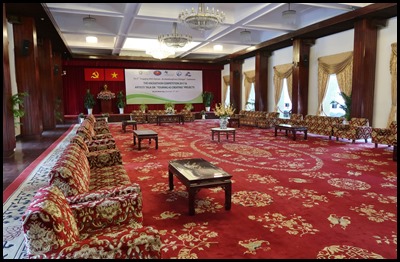 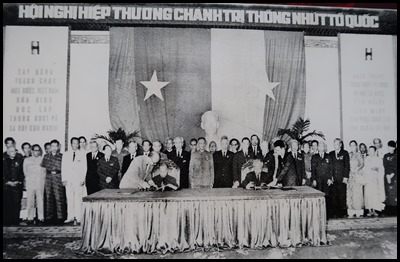 The Conference Hall and in use:
Representatives of the North and the South approving the result of the
Consultative Conference for National Reunification. 21 November
1975.
Reception
for as many as 500 guests were held in this room, which was also used for the
installation of each new cabinet.
At 1930:
on 21 April 1975, President Thieu delivered his resignation speech in this
room:he spoke for over 2 hours about the country’s situation in the wake of the
Americans’ decision to discontinue their support. Vice President Tran Van Huong
then succeeded to the Presidency, pledging to continue the struggle “to the
bitter end”. He resigned just a week later, and was replaced by General Duong
Van Minh, from whom the revolutionary authorities received the formal
declaration of surrender.
In
November 1975, the Consultative Council for National Reunification used this
room for its deliberations Today it is used for official receptions and other
important events.
 At the back of
the Conference Hall is the Trong Noi: Viet Nam
Quoc to a legendary ancestor of Viet Nam. Watercolour on paper.
1966.
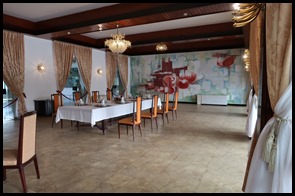 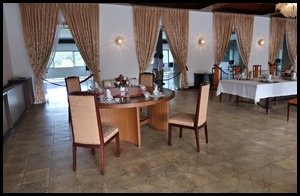  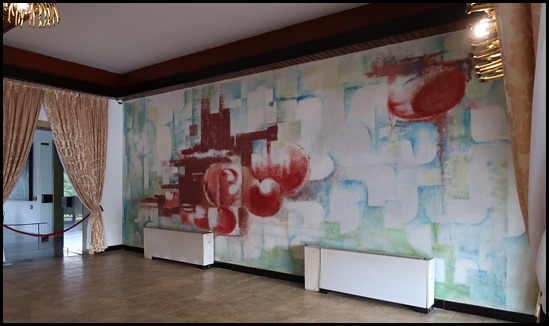 The First
Lady’s Reception Room, at the far end a large table,
at the other an intimate table for four. In use. The First Lady Mrs. Nguyen Thi Mai Anh
receiving Mme. Merillon, wife of the French Ambassador, 6 November
1973.
The President’s wife held receptions
here, often entertaining the wives of visiting heads of State and leaders of
various national and international organisations.
The lamps in the shape of flowers give
the room a sense of peace and charm. The decor features a distinctive pairing of
two contrasting motifs: the three porcelain figures representing the traditional
Gods of Happiness, Prosperity and Longevity and an abstract
fresco in modern cubist style. The wife of President Nguyen Van Thieu,
Mrs. Nguyen Thi Mai Anh, was born in 1930 in My Tho in Tien Giang Province to a
family of Catholic doctors. She married Nguyen Van Thieu in 1951, when he was a
serving army lieutenant; they had three children, a daughter, Nguyen Thi Tuan
Anh and two sons, Nguyen Quang Loc and Nguyen Thieu Long.
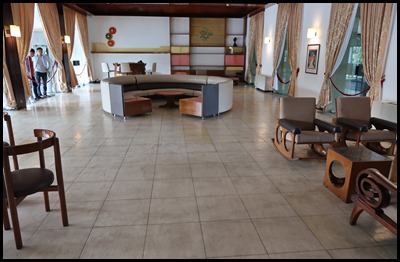  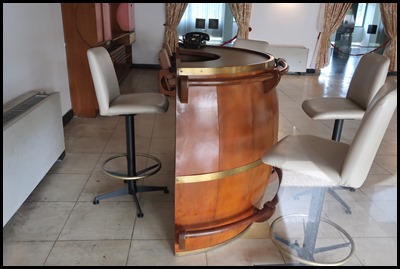  The Games Room.
 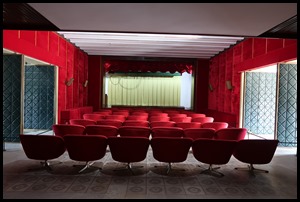    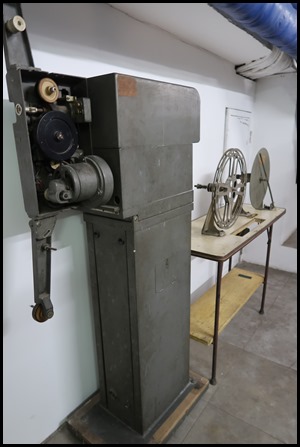 The theatre, with wonderful old
projection machines.
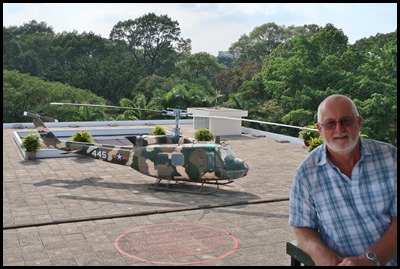 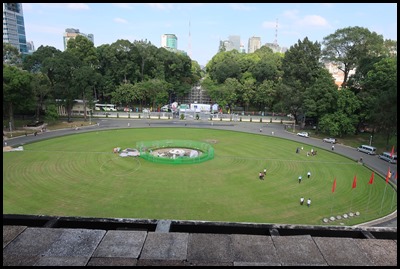 On the top
floor Bear posed with a helicopter behind him. We
looked over the front garden toward the park
opposite, currently having a massive stage built for New Year’s Eve, they did a
sound check and we all shot back a few inches......
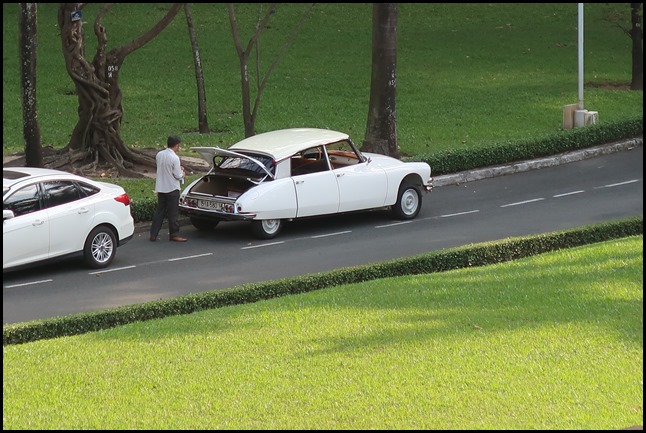 Bear liked the
old Citroen parked on a side
road.
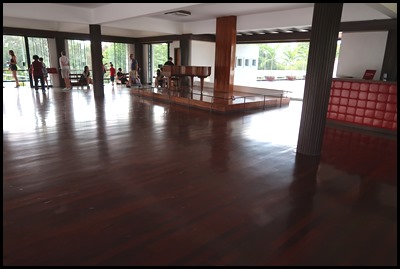  At the far end
of the upper floor is the Dance Hall complete
with Baby Grand, standing on a lovely woodblock
flooring.
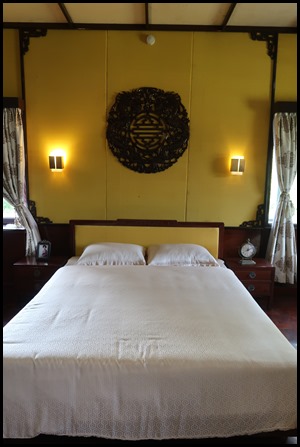 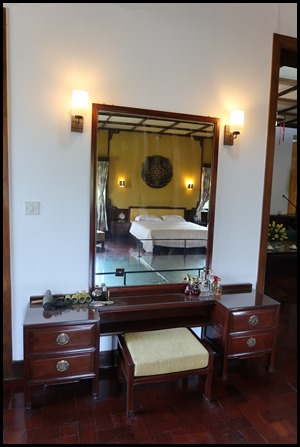 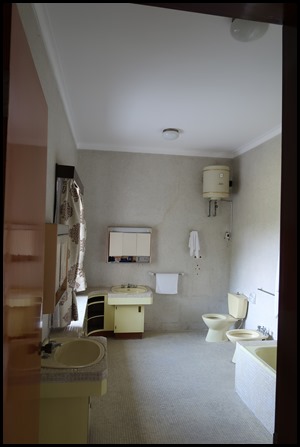 The Presidential Bedroom, liked the dressing table but not keen on the en
suite colours.
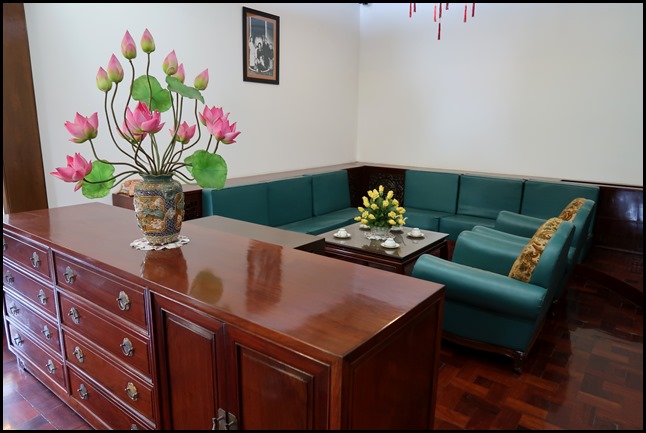 The sitting area.
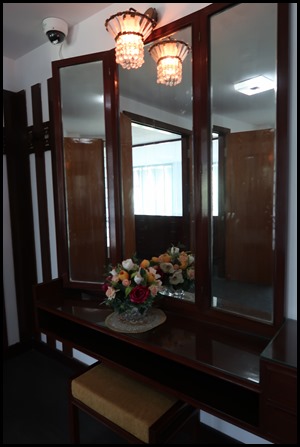  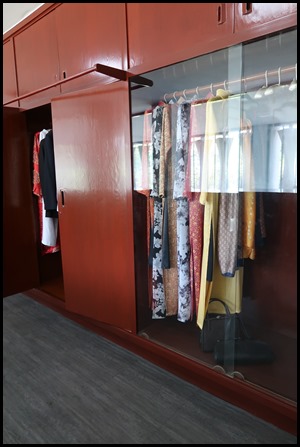 Oh wow. A dressing room not only huge but a mile
long. Make up table, with shoe drawers and wardrobes the
entire length....
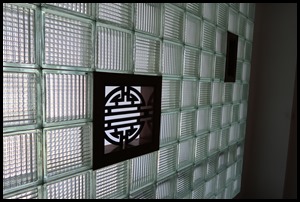 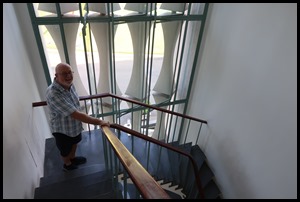  Down the stairs.
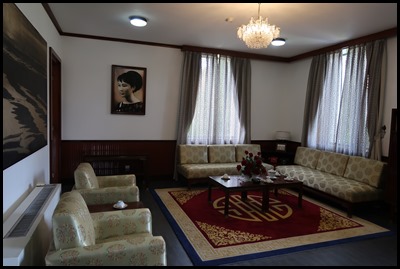 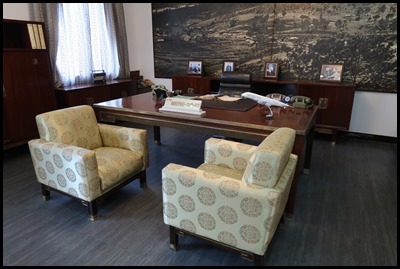 The Vice Presidential Office.
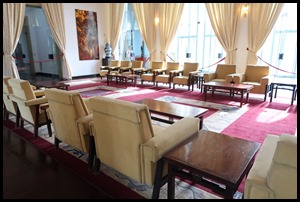   The Vice
President’s Reception Salon and in use. General Nguyen Cao Ky receiving the
future US President Richard Nixon. 15 April 1967.
Nguyen Cao
Ky, Vice President of the Southern Republic from 1967 to 1971, was born in Son
Tay in 1930. He had French and US military training and served as a commander of
the Southern Republic’s airforce and President of the Central Executive
Committee, then as Prime Minister. He spent his final years in exile and died in
Malaysia in 2011. Tran Van Huong was born in Vinh Long in 1902. He served as
Prime Minister of the Southern Republic and as Vice President from 1971 to 1975,
then as President from 21 to 28 April 1975. He died in 1982 in Ho Chi Minh
City.
The
salon’s principle decorative features are the two lacquer paintings produced in
1966 by Thai Van Ngon. They represent Ha Noi’s Temple of Literature and a famous
historical scene:the 13th century King Tran Nhan Tong presenting his robe to a
mendicant.
 At the top of the stairs, a huge space with
this big, round carpet manufactured
in Hong Kong in 1973.
Continued |